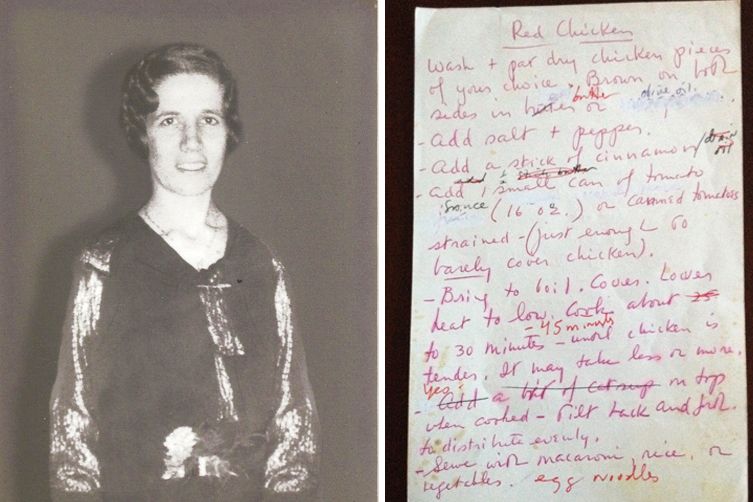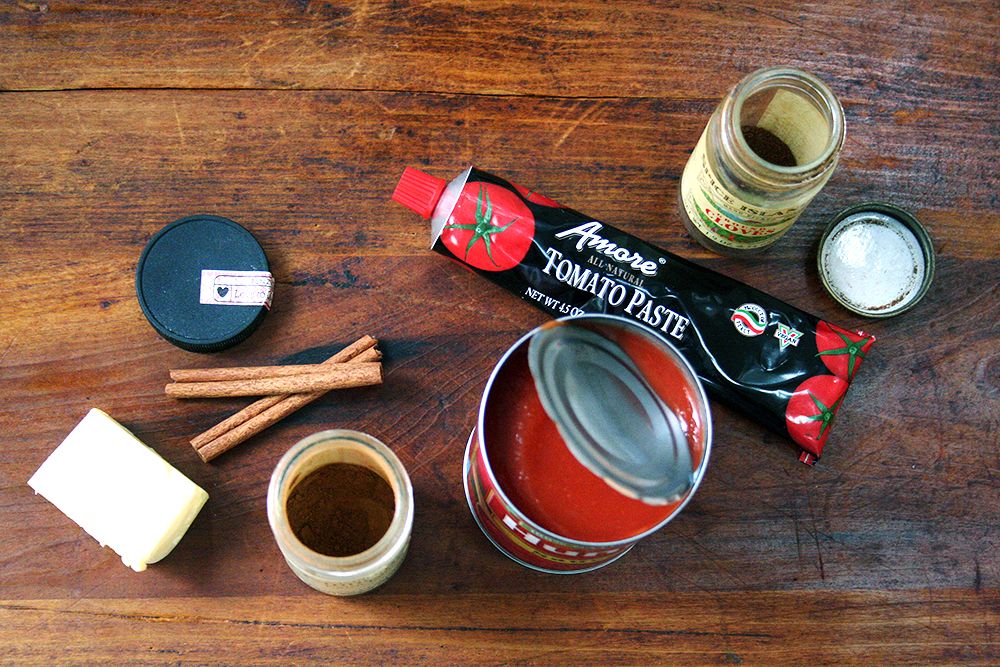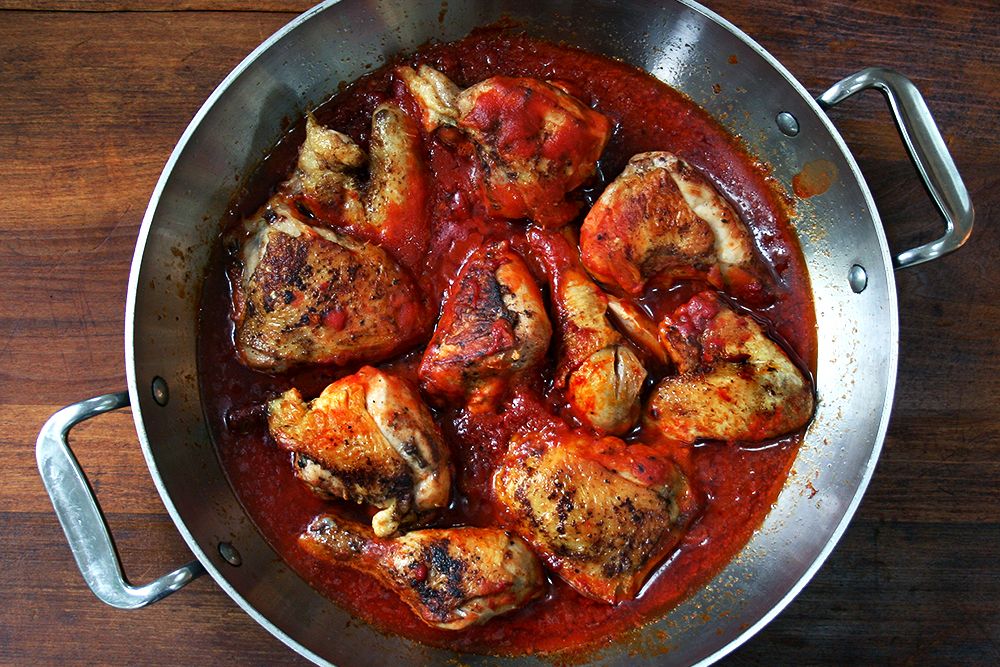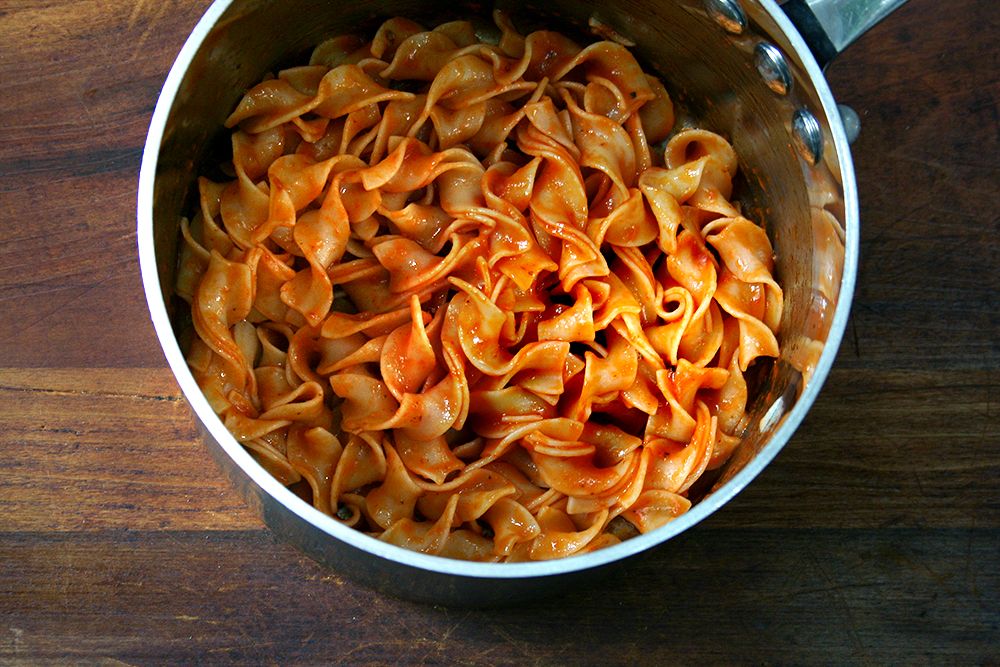
On our new weekly podcast, two friends separated by the Atlantic take questions and compare notes on everything from charcuterie trends to scone etiquette.
Listen NowPopular on Food52
11 Comments
Maria N.
December 20, 2015
Made this tonight and it was delicious. My family is Greek but I've never had chicken kapama. Oh and I think you mean pastitsio; pasticcio is Italian- there's no "ch" sound in Greek. :-)
Alexandra S.
December 20, 2015
Yes, you are absolutely right — pastitsio! So happy you liked this. It's one of my family's favorites :)
J D.
December 3, 2013
Always interesting to see how these dishes translated from a Greek kitchen to a 20th century kitchen in the U.S. We have many versions of red sauce/kokinisto/krasato/kapamas type braised chicken dishes in Greece. Rooster braised in a red sauce is a specialty of the larger region that Alexandra's great grandmother comes from. Literally cooks for hours w/ any combo of red wine, tomato, tomato paste, fresh chopped tomato,and with or without the spices as in this recipe here - the only way to soften a tough old rooster is a LONG, slow braise stove top or oven.... and it is DELISH! Gonna give this one a try. Thanks Alexandra. (ps - kapama or kapamas comes from the Greek word "kapaki" which is the name for the lid of a pot) Alexandra - any other old country recipes you have from your great grandmother?
Alexandra S.
December 3, 2013
So interesting! Thank you for sharing the origin of the word kapama. I meant to ask my aunt, who still knows a bit of Greek, that question. It really is true how the long slow braise makes a difference in this particular recipe. And yes, I have quite a few old recipes from my great grandmother, but I'm not sure I have them all transcribed. When I was talking to my mother and aunt they mentioned stuffed tomatoes, yiaprakia (you probably know this, but it's stuffed cabbage with egg and lemon sauce), chestnut stuffing, egg and lemon soup, diples, yogurt cake, dolmades macedonia, and lamb fricasee. If you want any of these recipes, I can ask my mother and aunt. Thanks for your comment!
J D.
December 3, 2013
Thanks, Alexandra, I'll email you via your site, but curious about several of the ones you've got listed. I am assuming she was from the Peloponnese? (Pyrgos), so yiaprakia (lahanodolmades) is the northern Greek word for stuffed cabbage leaves and I'm curious to see what makes the dolmades macedonia, well, Macedonian (again, northern Greece). I'll send you a link to an interesting vid of a friend, second generation Greek American, making spanikopita w/ Martha Stewart. He apologizes to Martha for using butter instead of olive oil as his "yiayia" (grandma) taught him, but in actuality, depending on the region his yiayia came from, it was probably completely accurate to use butter. Thanks!
Alexandra S.
December 5, 2013
Oh, so funny! I would love to see that video. I am curious as to how your friend makes spanakopita compared to how I learned — my mother always taught me to spoon the butter (versus brush) over the layers of phyllo, which (apparently) creates lighter layers. So glad to hear that using butter is accurate, too, because that's what my family always uses.
Ok, so yes, Gramma Worcester was from the Peloponnese, and it is interesting that some of the dishes she is known for are from northern Greece. I'll have to ask my mom. It might be because the other great grandmother (my grandfather's mother), Gramma Manchester because she lived in Manchester, NH, was from Macedonia, and it's possible that over the years they shared recipes. But I don't know? I'll look into it :)
Ok, so yes, Gramma Worcester was from the Peloponnese, and it is interesting that some of the dishes she is known for are from northern Greece. I'll have to ask my mom. It might be because the other great grandmother (my grandfather's mother), Gramma Manchester because she lived in Manchester, NH, was from Macedonia, and it's possible that over the years they shared recipes. But I don't know? I'll look into it :)
J D.
December 6, 2013
Here's the link to the vid below. Oh, you can't even begin to imagine the plethora of different versions of spanakopita in Greece depending on region, and of course each individual cook, with or without egg, cheese, or a mix of cheeses, with or without a mix of herbs, green onion, red onion, etc. Sometimes rice or bulgur or a type of dried gruel called trahana added in to add either flavor or keep the filo dry. So many. Most people outside of Greece don't know that we have a HUGE amount of Greek cookery that's nothing but pites (filo pies). So many different types of recipes for filo (handmade of course)as well. So many, many different types of wonderful savory pites. You can't imagine. One could write volumes on the topic. Unfortunately, since the arrival of ready made filo, freezer section frozen pies and both parents leaving home for work, fewer women are learning how to "open" a filo from their mothers or grandmothers, and many old amazing regional pita recipes are being lost as the older generation passes on. I've been meaning to post my recipe for kotopita (chicken and cheese pie with filo). It's a variant of a friend's mother's that's quite easy to make and absolutely delish, and will work fine with store bought filo. She's from Lesvos (island in eastern Aegean) but this particular kotopita recipe that she uses weekly has its origins from northern Greece, so there ya go!
http://www.marthastewart.com/994622/greek-spanakopita-spinach-pie?search_key=spanakopita
http://www.marthastewart.com/994622/greek-spanakopita-spinach-pie?search_key=spanakopita
Alexandra S.
December 8, 2013
Just watched the video — so interesting! I never knew there were so many variations on making spanakopita. I never would knew rice or any grain could be used in the filling, let alone soy sauce :) I loved that! And I loved your friend's yiayia in the audience. Too cute. My family uses eggs, feta, cottage cheese (probably what my great yiayia's used in place of soft myzithra), and raw spinach. I have a recipe (not that you need one!) but in case you are curious: http://www.alexandracooks.com/2012/03/23/spanakopita-strudels/ (you have to scroll down to get to the traditional pita — I made strudels for fun)
My mother remembers her grandmother making her own filo and hanging the sheets on the clothes drying rack. I would have loved to see that!
I would absolutely love your recipe for kotopita. Please let me know when you post it. It sounds absolutely divine.
My mother remembers her grandmother making her own filo and hanging the sheets on the clothes drying rack. I would have loved to see that!
I would absolutely love your recipe for kotopita. Please let me know when you post it. It sounds absolutely divine.
lapadia
December 2, 2013
A lovely recipe and history that goes with it. Cheers to your Great Gramma!






See what other Food52 readers are saying.